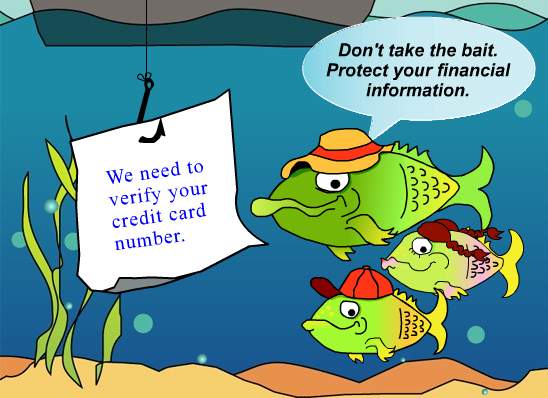Phishing Attempts Are Growing And Here's How To Detect Them

An early Phishing warning from the FTC
Phishing attempts have been around for a very long time but these have had so much success that they are growing in number and in how they attempt to steal from you and me. These types of attacks have always implemented some form of social engineering which essentially means they try to fool you into trusting them by representing as an acquaintance, some type of authority or tugging at emotional strings as in the case of a charitable cause. In any case they are trying to take your money and you need to know how to detect phishing attempts to avoid being a victim. Above all else this is a matter of vigilance whenever anything even slightly appears questionable whether it be a phone call, an email, a text message or a website/popup when browsing the web. Phishing attempts have become more refined as years have gone by since the notorious Prince of Nigeria phishing scam long ago and they are often far less obvious in their presentation. You're far more likely to see a request to update your login credentials for any legitimate banking or credit system you use coming from an illegitimate phishing source than you are to be asked to send thousands of dollars to receive millions back. It is knowing how to detect phishing attempts which we all need to improve upon to keep safe from being victimized in the ways people are falling victim to phishing today. Keep reading and you'll see how phishing attempts are growing and here's how to detect them.
How To Identify Phishing Attacks
Whether or not these attempts to attack succeed they are in fact Phishing attacks. Since most people have realized over the years that the older versions of phishing can easily be identified in most cases and the perpetrators of these know this, the entire business of phishing has evolved. Email is still widely used in phishing attacks and you need to look for a few things in an email to identify phishing attacks of this type. Typos often appear in email phishing and if it is grammatically sloppy or outright incorrect that's a red flag. Whenever you are asked via email or text to change your password think twice and don't do it using links within such an email or text. If the address an email is sent from is an imitation of a legitimate company's address that means trouble. Part of how phishing has evolved is in that these phishing attacks tend to present something of an urgent nature claiming that you must take action immediately or suffer some derived consequence. If you see a link in that email which is not the same as what displays when you hover over that link don't trust it. Any attachments that appear in any way unknown and/or unexpected are dangerous and could contain malware intended to compromise your computer so don't open them. Take a very hard look at anything such as that and no, Microsoft won't call you to say they need to access your computer because it's causing any kind of problem. Just not happening. That is another phishing venture using the phone which has been going on for a few years and still is happening although Microsoft has nothing to do with it. Did you get a call from the IRS (or someone claiming to be or represent the IRS) telling you that you MUST pay some owed tax or penalty which does not exist? Since you know that you've done your taxes if there ever was a problem - they would most likely notify you by mail and you can then resolve it through normal channels. No matter what you can just call the IRS yourself. Don't pay any perpetrator of Phishing anything just because they claim that you must, that's an automatic red flag and demonstrates how to identify Phishing attacks.
Prevent Phishing Attacks From Succeeding
These perpetrators of Phishing are cyber criminals and want to steal your money, your identity, and really your existence if they can. Do NOT under any circumstances comply with a request or demand to update your personal information, enter any account numbers or confirm phone numbers and email addresses because any bit of information they may not have could result in exactly what they need to steal from you if you give it to them. In fact you should never fill out any forms at all unless you know the connection is secure. Take a look at the address bar right now while you are visiting resolvecomputer.com and note that the address starts with https and there is a green secure lock icon to the left. If that is not present do not enter any personal information under any circumstances! Whenever you do detect and identify a Phishing attack in an email or text take a few prudent steps which include contacting the actual supposed sender directly, reporting the incident to the FTC, and then hitting that DELETE button. If the attack came from a phone call, don't tell them anything - just hang up the phone! Since there is also some Phishing which happens without indication such as "man in the middle" attacks where it is hidden online within otherwise seemingly legitimate websites, updated security software should be installed to help detect and block these attacks. All these things combine to help you detect attacks and prevent Phishing attacks from succeeding.
Here's a link to the FTC Complaint Assistant.
